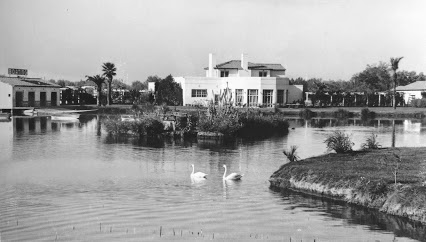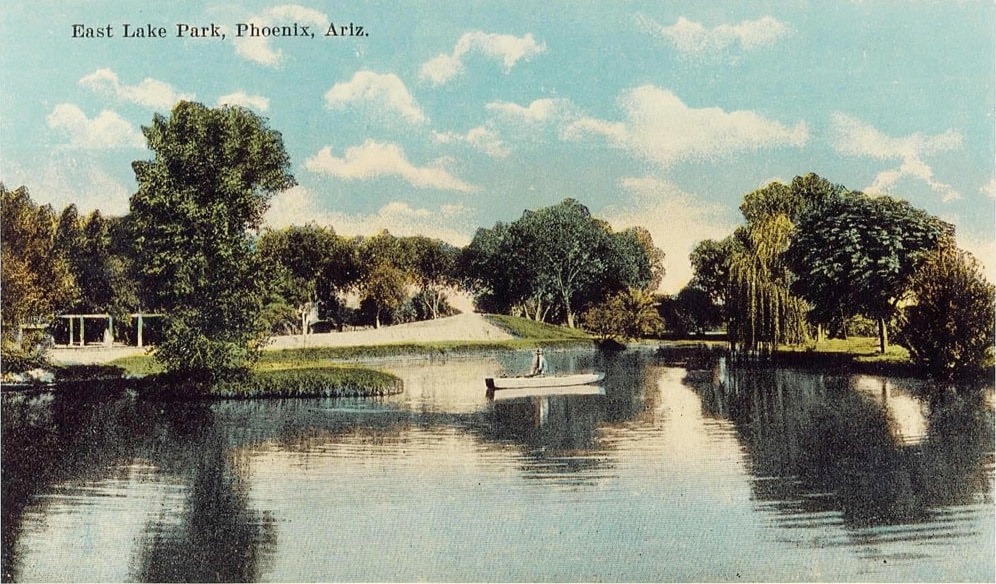Park Lakes
Donna Reiner has written many articles over the years for the Arizona Republic and others about Phoenix history and memorials. She is a regular contributor to our newsletter. This month, Donna tells us about the manmade lakes in some of the early Phoenix Parks.
People going to Eastlake Park might be confused as apparently no lake exists. Was one ever there? Man-made lakes in some Phoenix parks is not a new phenomenon. But why do we have them when we live in a desert?
When Phoenix incorporated in 1881, residents wanted places where they could relax and play, especially on warm summer evenings.
Moses Sherman, a local businessman who started the Phoenix Street Railway Company, developed Phoenix Park at the southwest corner of 16th Street and Jefferson. Sherman ensured that people would come by cleverly ending the Washington streetcar line with a loop on Jefferson just north of the park. He made it even more convenient with a station located there.
While today’s city parks are free, Phoenix Park, now renamed Eastlake Park, had an admission charge. This splendid park offered picnic areas, boating and fishing on a small lagoon and a natatorium or swimming pool to entice visitors. Trees lined the lake, which was filled with well water and reportedly at one time even had an alligator.
Records are unclear as to when the lake at Eastlake Park was discontinued, but playing fields and a recreation center were built at the site. And the swimming pool is open all summer.
By the early 1930s, the park demand increased. William G. Hartranft, President of the Phoenix Parks and Recreation Board, persuaded the city to purchase approximately 200 acres from Dr. James Norton and J. W. Dorris. Encanto Park, located outside the city limits at the time, would become the city’s park system crown jewel.
Hartranft’s envisioned a park like Golden Gate Park or Balboa Park. A 1933 city bond funded the construction of a boating lagoon, band shell, 18-hole golf course, clubhouse, playground, and picnic area. With WPA assistance, the city was able to complete much of the design. The lagoon was filled with water supplied by SRP. Trees and shrubs lined the winding paths, while nature trails completed the transformation of former agricultural land into a veritable lush green oasis in the desert.
Over time, Encanto Park suffered from heavy use and lack of adequate care. The lagoon filled with algae; fish died; and the concrete bridges began to disintegrate. Fortunately, the city conducted major renovations on the park’s facilities in the late 1980s ensuring its continued popularity.



